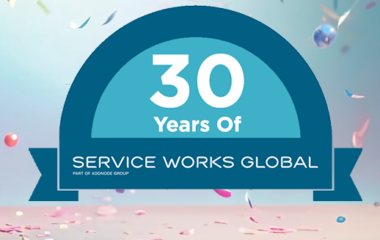SWG’s Business Development Manager Matt Bentley is published by Airport World, offering advice to facilities managers about asset management, including the key benefits and how technology can deliver efficiencies and cut costs.
How asset management can future-proof your operations
Many airports are now operating at close to pre-pandemic levels. Gatwick Airport, for example, is now offering flights to almost 90 per cent of the destinations it served in October 2019. That’s great news for the industry and for holidaymakers.
For those in charge of managing airport facilities, however, it means the pressure on the job is as high as it ever has been. With millions of passengers passing through major airports around the world, the margin for error is slim when it comes to maintaining a safe and compliant airport – and doing so within budget.
Facilities managers (FMs) and maintenance professionals are often told that technology and digitalisation is the answer. I want to focus on one specific area and give tangible guidance on how it can make the life of an FM easier – asset management.
Digital asset registers
At the highest level, an asset register should contain not just a list of an organisation’s assets, but whether they are fixed or removable, their location, condition, whether it is owned (and by who) or leased, who is responsible for that asset and pictures of each asset.
The beauty of compiling a digital asset registry is that you can add as many different categories as required and go really in-depth. Let’s say you have a category for electrical items. In addition to the top-level data points listed above, you could include information such as model, manufacturer, description, serial number, warranty dates, asset criticality, installation date, expiry date, cost, and supplier details.
Digital registers can be fully customisable so FMs can add anything they want to track. We even had a client add trees so they could create care and maintenance schedules against them.
Trying to compile such data using Excel spreadsheets or a mix of paper and software systems is a logistical nightmare. Furthermore, paper copies are easy to lose, and an FM or maintenance engineer has to go to where they are stored every time to view them.
Starting an asset register
When you have a finalised digital asset register it will bring huge benefits, not least increased efficiencies from having all data stored in one place and accessible from anywhere. However, there’s no getting away from the fact that creating the register can be a long and potentially difficult process. We work with one UK airport that has 6,500 assets in its register, so creating the register is clearly a significant project that requires time investment.
This is where it pays to be strategic. Assets can be created in an order that makes sense for the airport. It might be created room-by-room, and terminal-by-terminal. Or you may determine that HVAC systems are a priority and start there.
Heavy footfall areas are often a priority for airports. Many are short-staffed so lines for security and check-in are often already long – any further delays can exacerbate an already problematic situation. An airport that we work with in Canada determined that elevators and escalators were a top priority, so started there when they began compiling an asset register.
Regarding actually adding assets to a registry, we recommend an alpha-numeric code that makes sense outside of the software system. For example, elevators in arrivals might be tagged ELE-ARR followed by a unique number string. That will make it easier to track and add assets.
Enhanced compliance
Compliance is absolutely critical for airports. This ranges from ensuring the health and safety of everyone on a site, to delivering the agreed service. We work with clients who operate airports under strict performance criteria; exceeding agreed SLAs (Service Level Agreements) can incur financial penalties, so compliance is important from a financial perspective.
Capturing data such as installation and warranty dates is obviously an important first step. Computer-aided facilities management (CAFM) systems that are used to create asset registries can include a traffic light system for an at-a-glance overview of priorities.
FMs can go further by creating asset groups to improve planned preventative maintenance (PPM) scheduling. An asset group uses the data from the register and can be created using any criteria to group similar assets and assign them maintenance. Sticking with the elevator example, an asset group could list every elevator and when they should be checked for compliance.
PPMs can be easily assigned to operatives, whether in-house or external contractors, ensuring compliance and cutting down on time wasted by manually checking an asset when not needed.
Adding barcodes to assets can also help to increase efficiency. Operatives can scan a barcode with their CAFM app or phone camera in order to view asset details such as maintenance history, outstanding tasks, and usual manuals. Operatives can also scan a barcode to mark jobs as complete and demonstrate proof of presence to the end client.
Many of our clients require their staff to be able to report issues through the system, without the need for having to contact a helpdesk. This is where an intuitive self-service interface is vital; it saves time reporting potential problems, allows FM and maintenance teams to react quickly and reduces the time taken to fix maintenance or service requests.
Future-proofing the airport
With an up-to-date, detailed asset registry, airports can be much more proactive in their operations. Asset lifecycles can be mapped out for years in advance, which makes budgeting much more accurate, ensuring optimum useful life of equipment and intelligently informing repair/replacement decisions. Compliance is easier to ensure with scheduled maintenance and everyone using the same system to track jobs – especially important for airports that have big FM teams, huge physical sites and a mix of in-house and outsourced contractors.
It can be a daunting prospect, but it’s well worth it. We’ve had clients see a 30 per cent improvement in workflow and performance within the first six months of switching from spreadsheets to CAFM software to manage service requests.
As more airports, and indeed all sectors, look to digitalise operations, it’s more a question of when rather than if. And there’s no better time to start than now.








